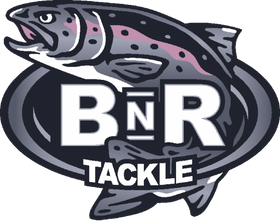Twitching Jigs or “twitching” as it is often referred to is a method that has exploded in popularity over the last 15 years in the Pacific Northwest and Alaska. The technique is simple and effective.
The application is mostly deployed in the freshwater sections and upper tidewater sections of rivers. Coho are the most commonly targeted species but it is a very effective method for Chinook, chum, pink, and even sockeye salmon as well.
Rods/Reels/Line
Spinning rods for twitching are shorter 6’ to 8’ typically one-piece rods with a fast action, rated 10-20lb and up to ¾ or 1 oz of weight. Reels are 2000 to 3000 series spinning reels capable of carrying 150 yards or more of 30 to 50 lb. braided line. Braided line is highly recommended for this technique. The low stretch of braided line is beneficial for hook sets and the high abrasion strength is necessary while fishing around log jams and other debris. An option leader length of 4’ to 6’, 15 to 20 lb. monofilament can be added between the jig and braided line.
Twitching Jigs
Twitching Jigs are available in three main body types. Hair/Fur jigs are tied with standard fly tying materials and often strips of rabbit fur. Hoochie jigs incorporate a variety of hoochie colors that are available from saltwater fisheries. Skirt jigs are manufactured using silicone skirts banded together. Color variations are limited by imagination and tying skills only, popular colors include pink, purple, blue, black, chartreuse, and white. Common jig sizes are ⅜, ½, ¾, and 1 oz sizes with heads being painted.
[gallery link="none" columns="4" ids="16057,16055,16056"]
Technique
Twitching as the name would indicate involves a quick upward sweep of your rod from being horizontal to the water to nearly perpendicular to the water followed by dropping the rod tip such that the jig falls freely in the column. This causes the jig to rise quickly and then fall freely. Reeling should be done as the jig is falling, just enough to take up the slack created by the upward sweep and keep the jig in free fall. Bites often happen on the drop and the bite is felt when the rod is raised for the next upward sweep. It is important to swing upward quickly to drive the hook into the jaw of the fish. There are many different levels of twitching speeds and heights that are effective. We encourage individuals to experiment and find the speed and height that works best for you.
Twitching Water-Holes
Twitching is effective in many different types of water. Most common holes are deeper, slower, pool with wood, rocks, high banks or even log jams. Coho are notorious for resting in this environment and darting out to grab twitching jigs that land nearby. Twitching is effective in many other water types where the fish may be holding or moving through. The limitations that I have experienced are water less than 3’ deep and water faster than walking speed current.

In conclusion, twitching is an effective method for targeting salmon. The simplicity of the gear and the active nature of the method make it an interactive and enjoyable method.
| Table 1: Twitching Options | |
| Rod Size/Type | 6’ to 8’, 10-20 lb. one piece, fast action, spinning |
| Reel Size/Type | 2000 to 3000 series spinning reels capable of carrying 150 yards of braided line |
| Line | 25 to 50 lb. braided line |
| Leader | 3’ to 4’ of 15 to 20lb monofilament (optional) |
| Jig Sizes | ⅜, ½, ¾ and 1 oz |
| Jig Colors | Pink, purple, blue, black, chartreuse, and white |


